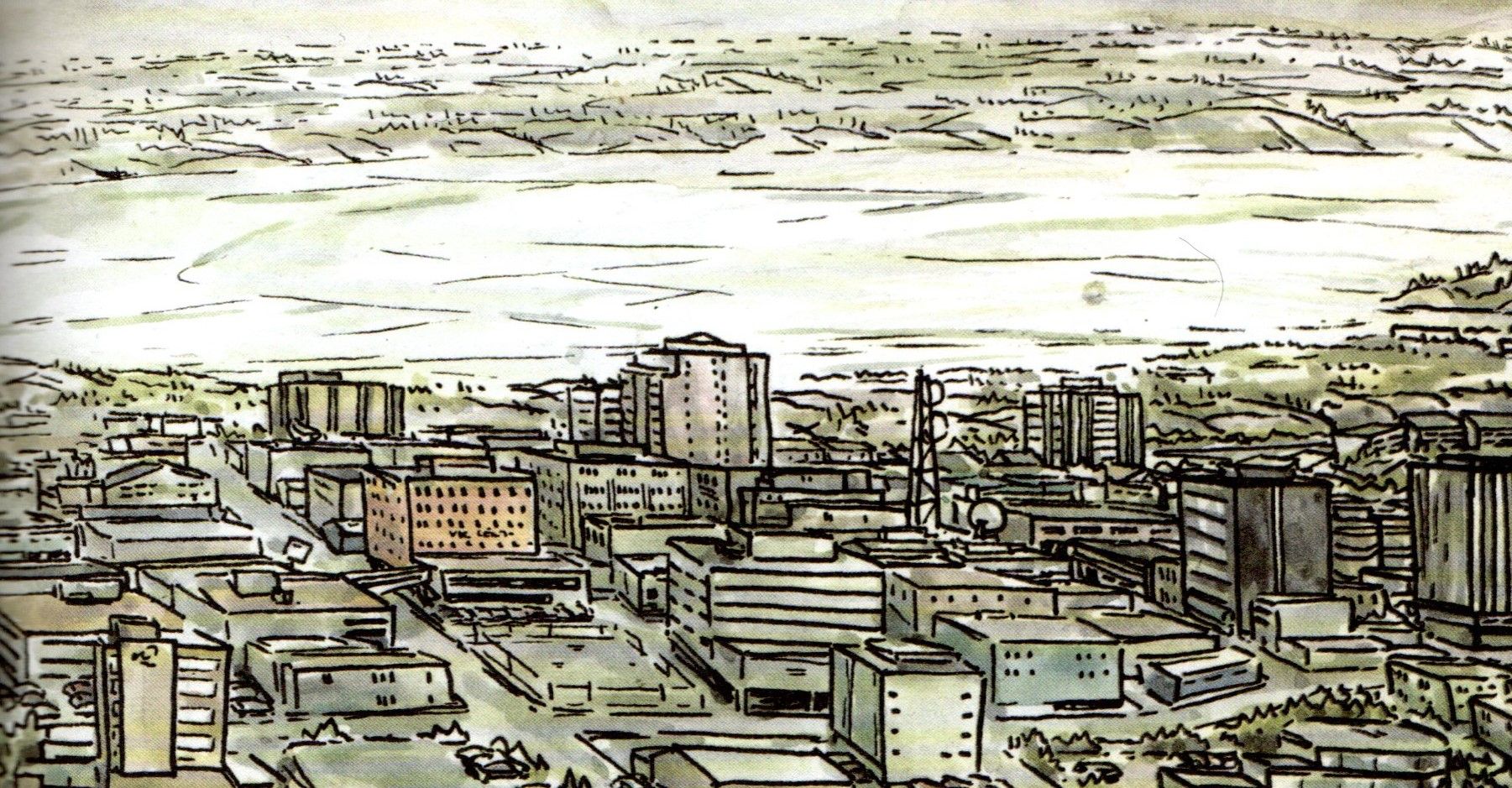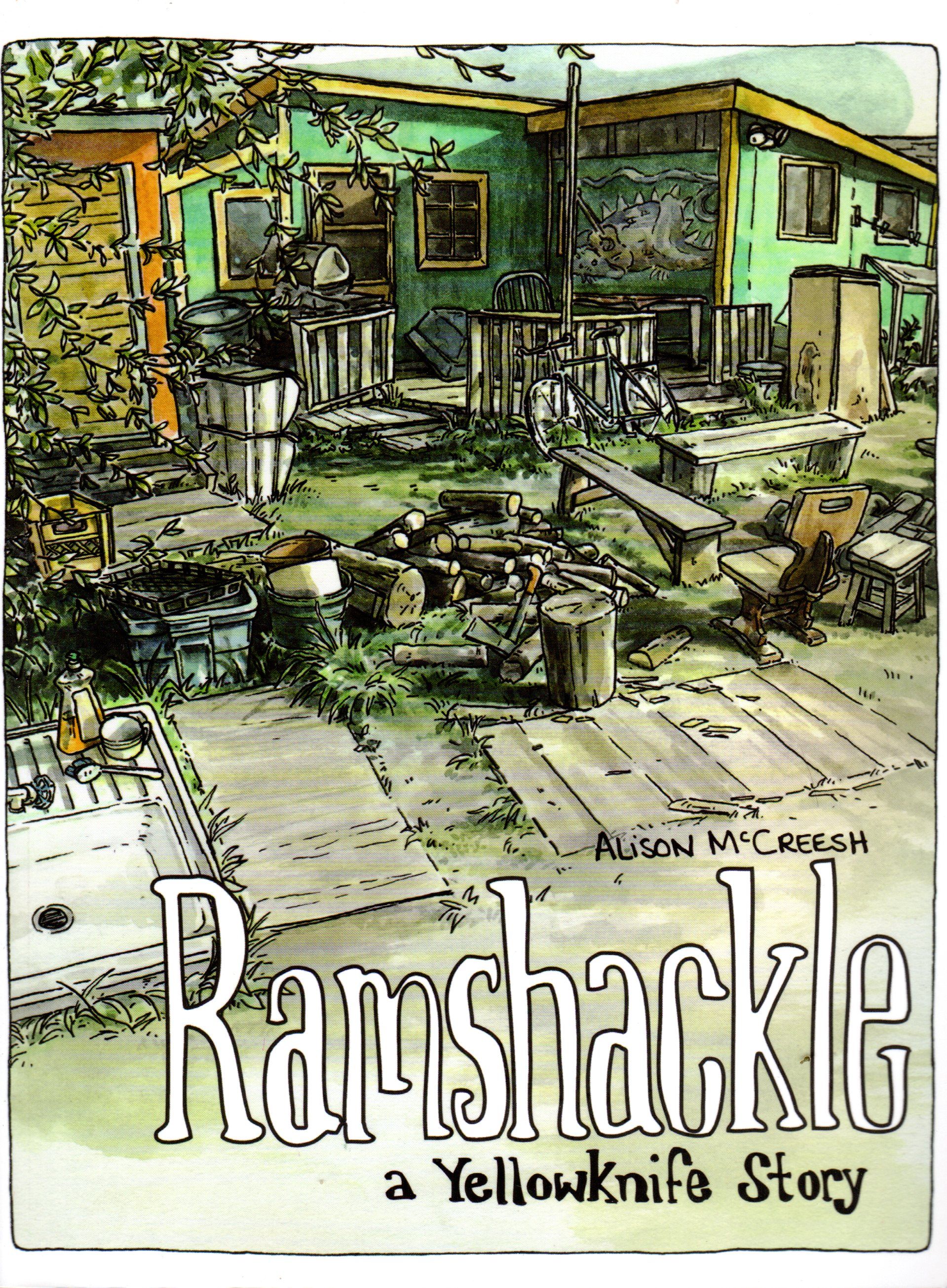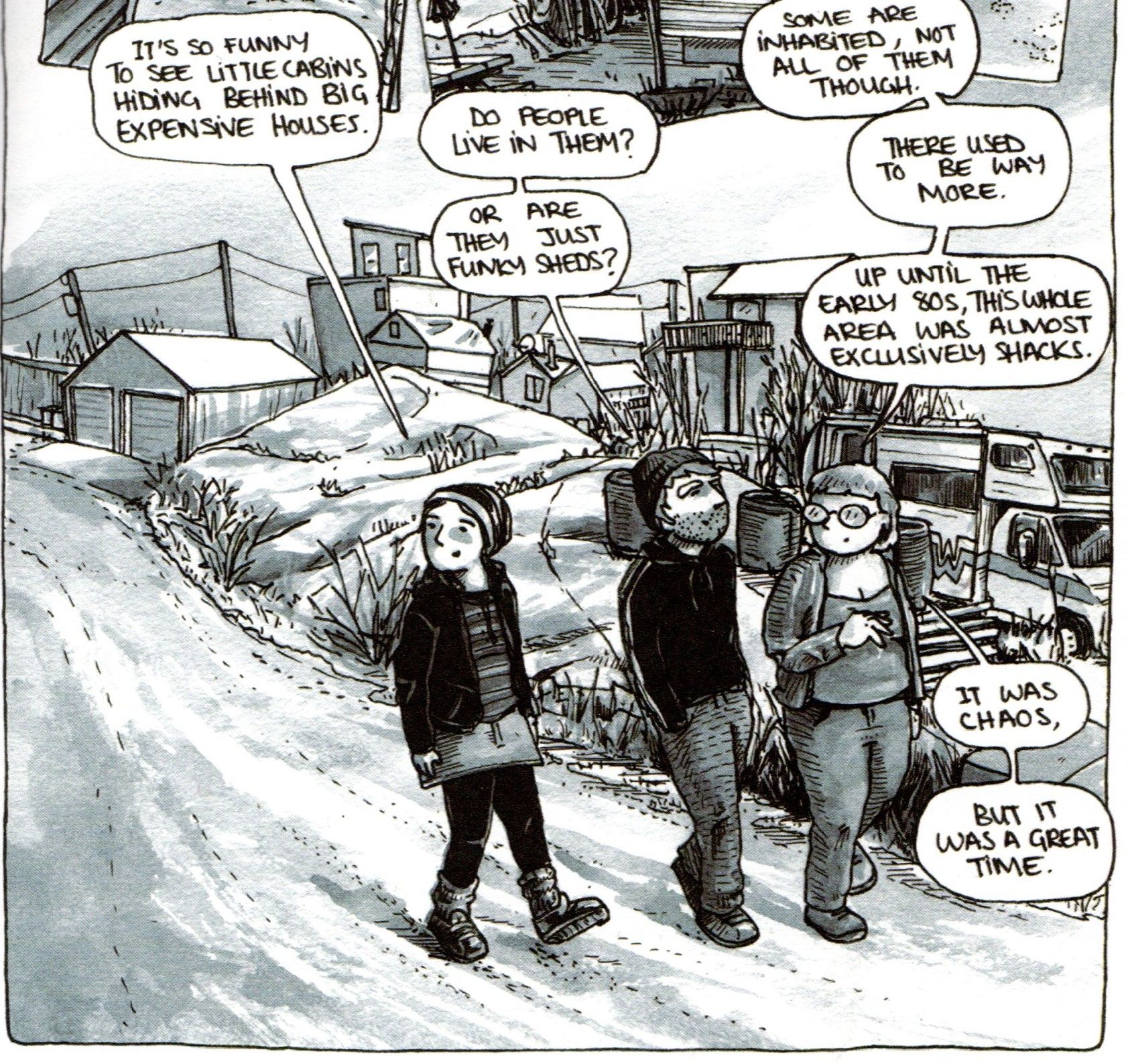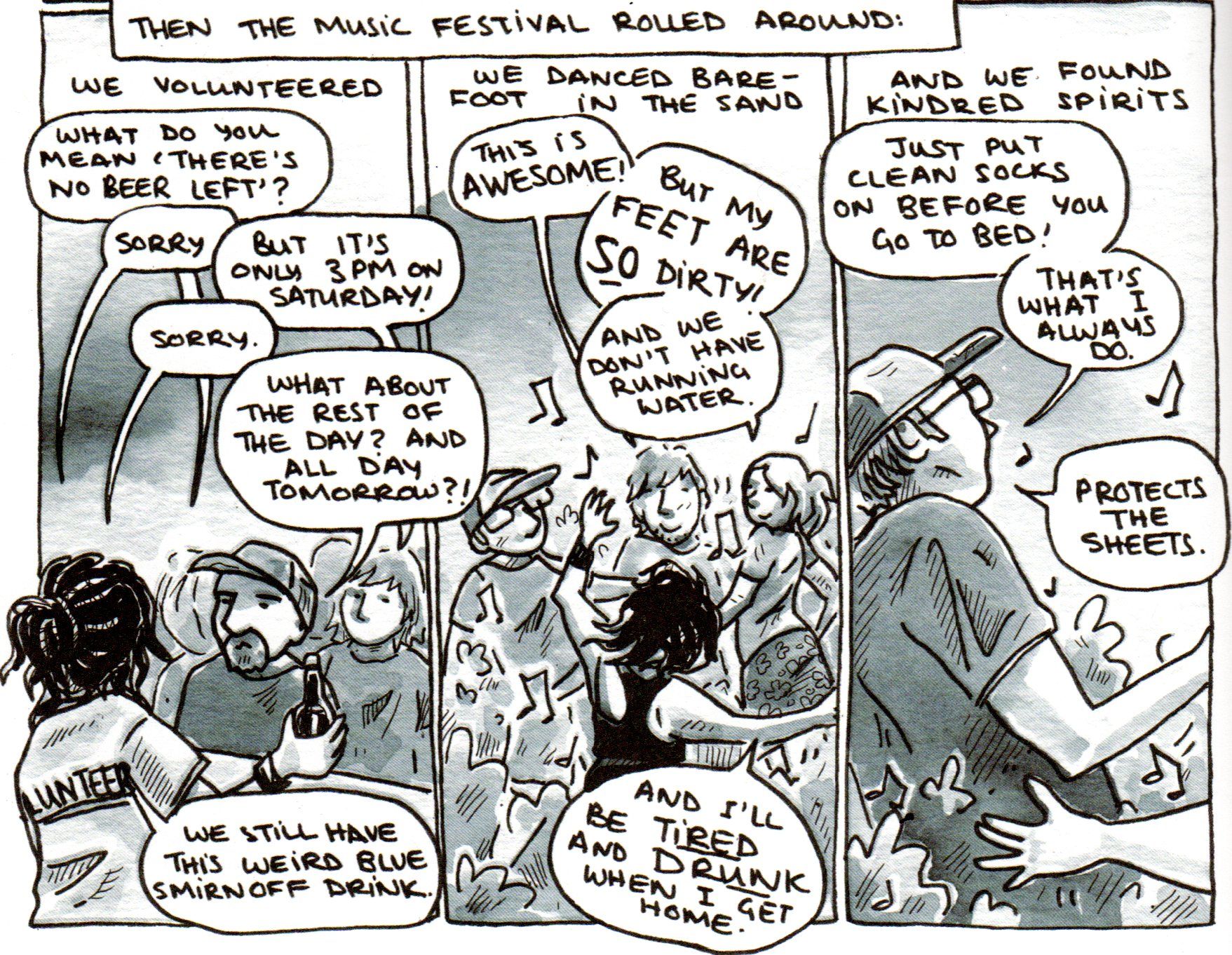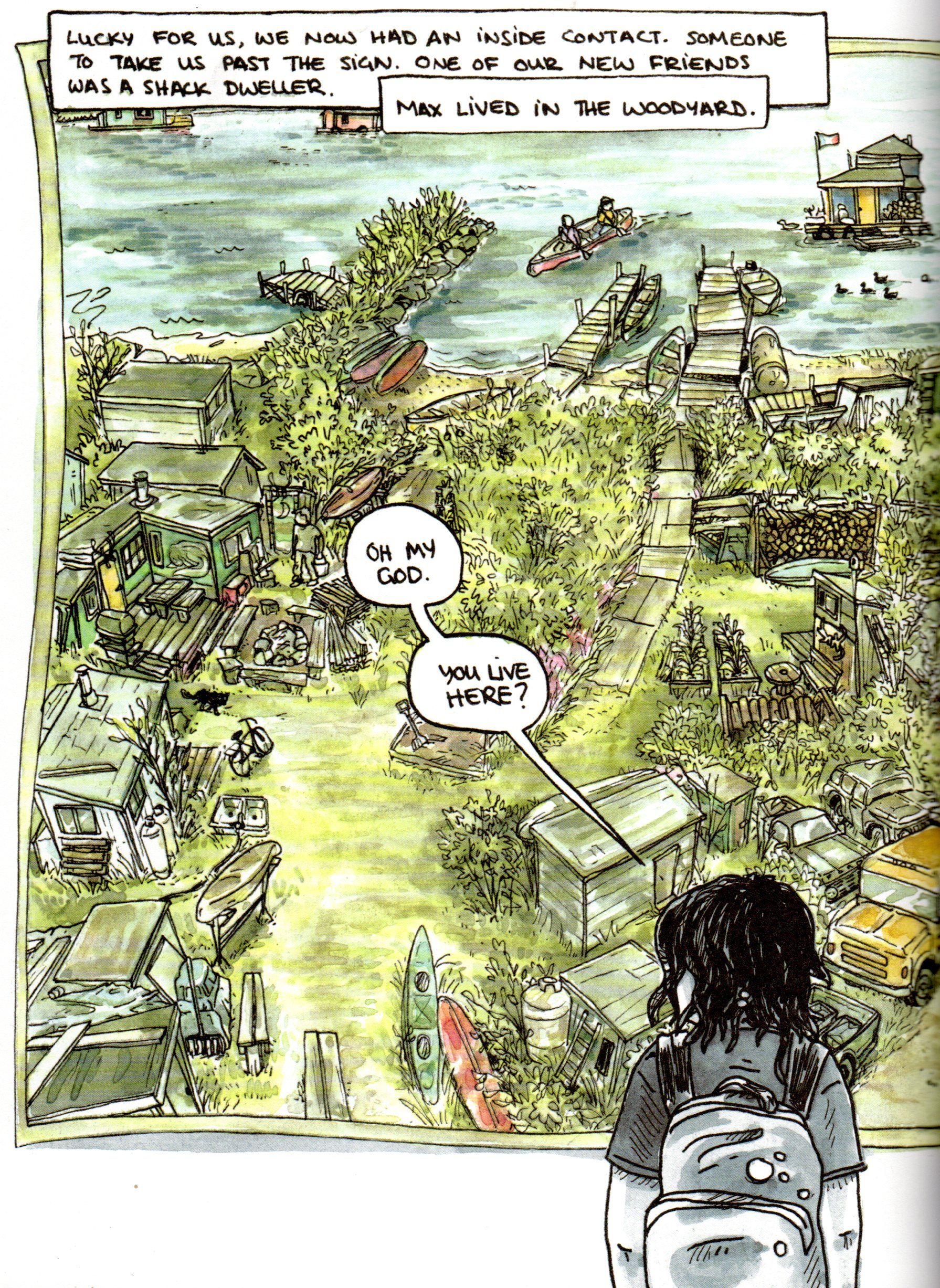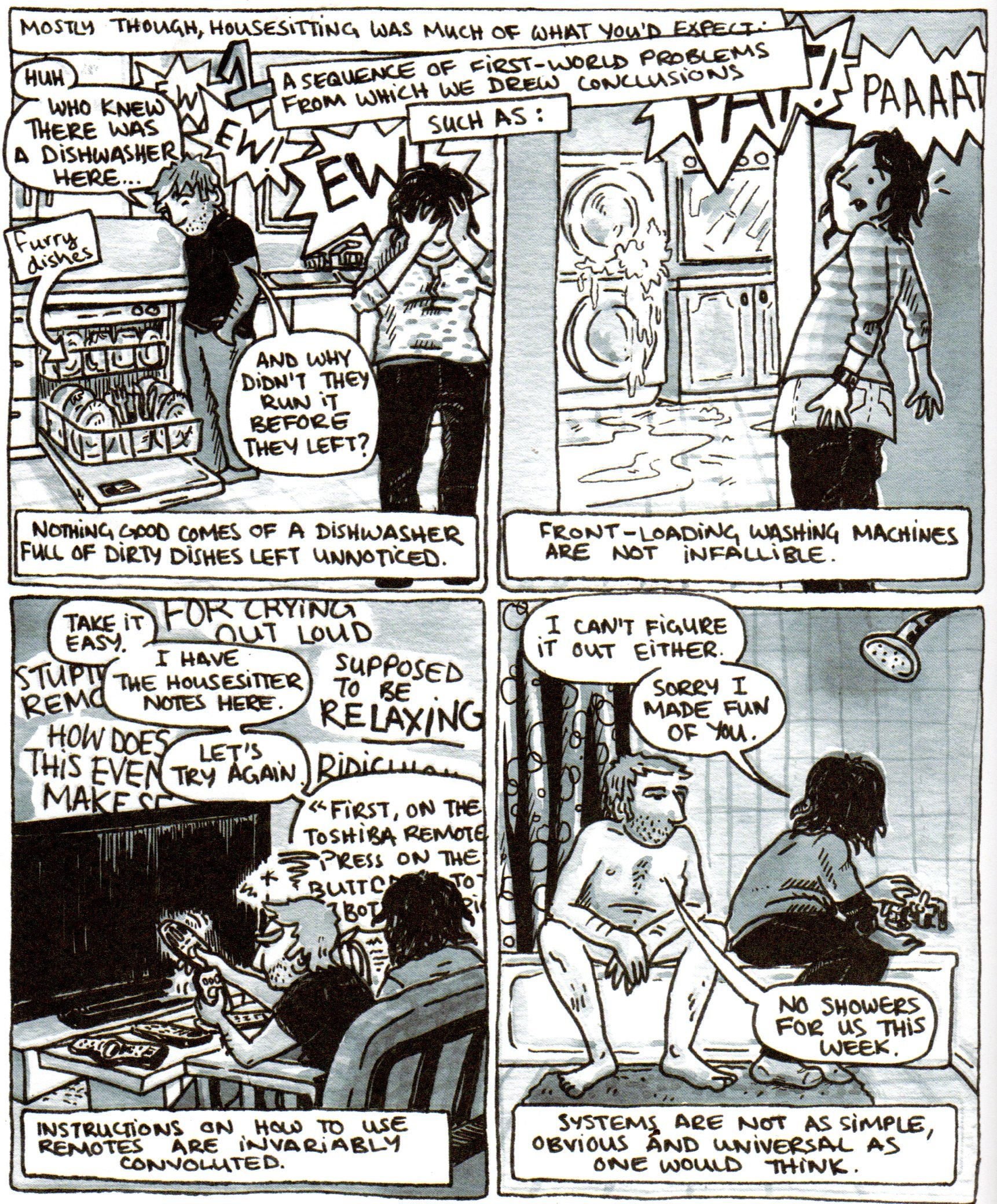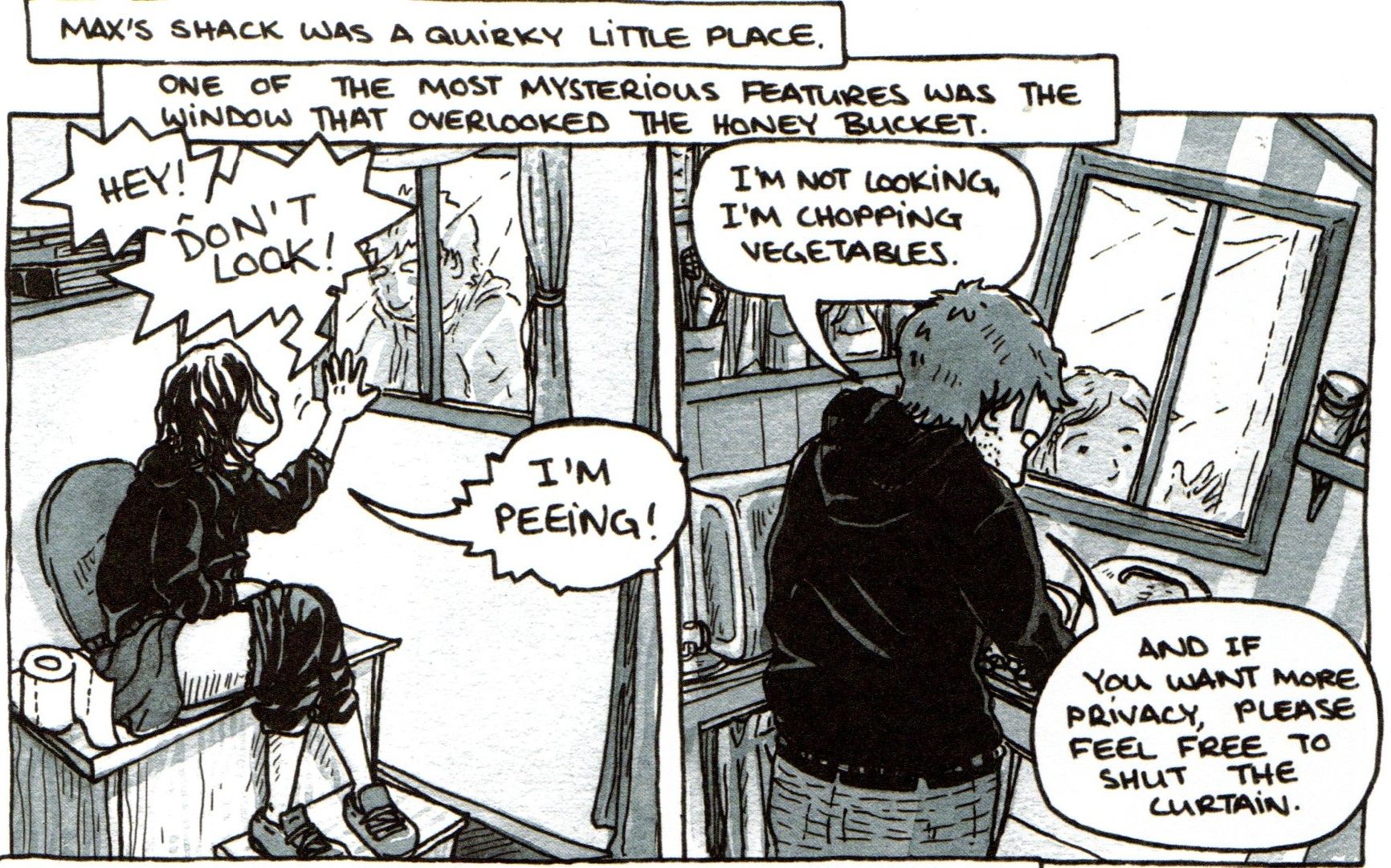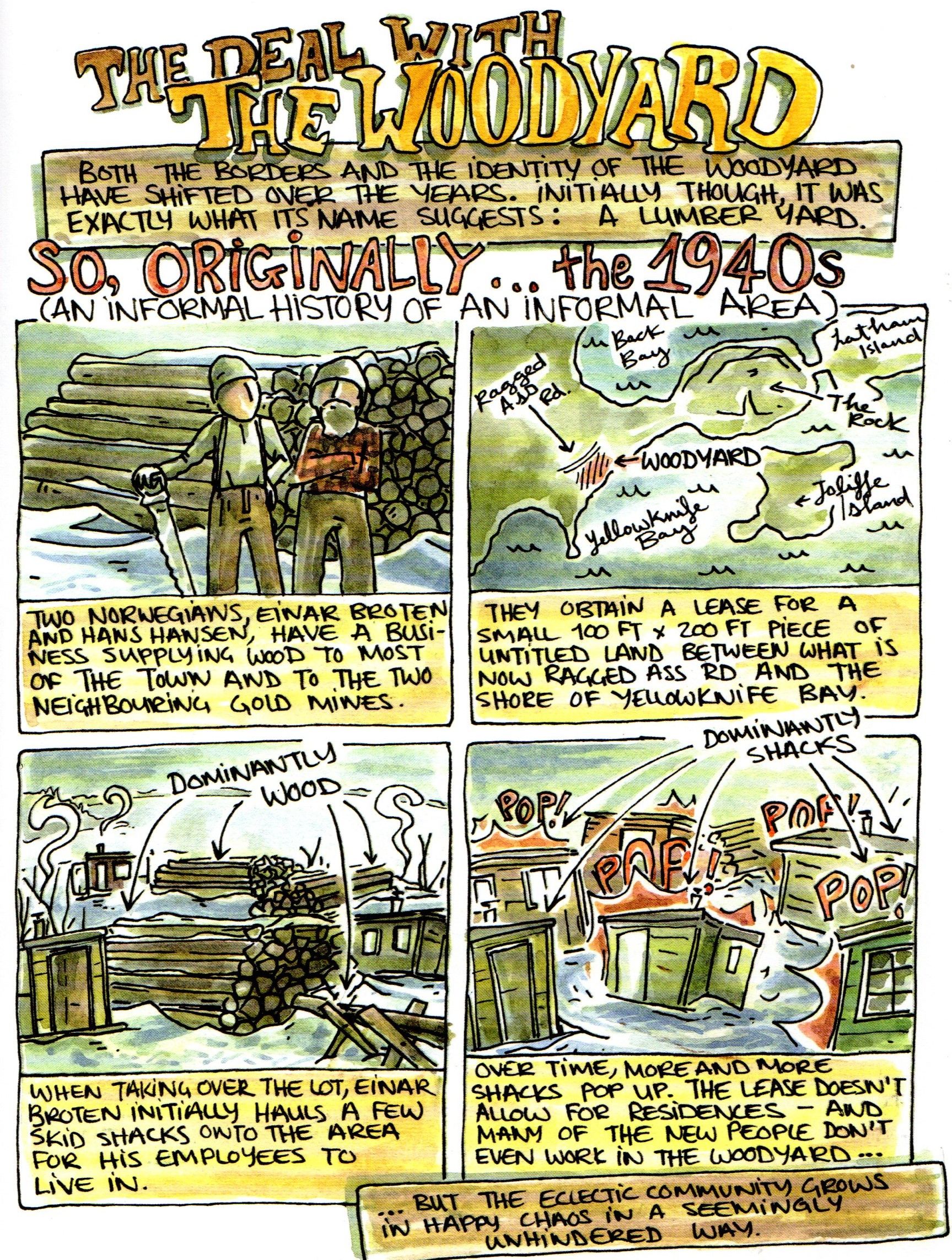"We will go nowhere we know / 'Til we find our one and all / Your hand me downs, flypaper towns / Stuck together one and all"
Ramshackle came out a few months ago, but as usual, I'm behind on my reviews, so I haven't had a chance to get to it yet. Oh dear. Anyway, the creator is Alison McCreesh, and Conundrum Press has published this. It costs $20 and clocks in at 134 pages.
As long-time readers of the blog know, I'm ambivalent about autobiographical comics.
Most people do not have fascinating lives, and unless autobio comics are really well written (which is often not the case) or the person does something interesting, they're just not that compelling to me. However, I do like reading stuff about people in new and weird places, so if it's an autobiographical comic in which the person actually does something interesting, I'm more inclined to check it out. McCreesh's book isn't a true autobiographical comic, as she's simply writing about one summer of her life, but it's the summer when she and her boyfriend decide to move from Nova Scotia (well, he's in Quebec) to Yellowknife. Off they go, and this book is about their travel there and how they survived the summer. McCreesh didn't stay in the city after the summer, as she and her boyfriend (Pat) went on a long road trip, but she went back and stayed there because it cast its spell on her. So this book, while it's about McCreesh and her relationship with Pat (which according to the notes in the back, is still going strong), it's also about adjusting to a strange new world and why someone would subject themselves to living north of 60 degrees latitude in the middle of nowhere.
The idea of "North" in Canada, it seems, is much like "West" in the United States, so as someone who took that plunge 20 years ago, I was interested in that aspect of the book, as well.
McCreesh doesn't do anything too fancy with the writing - it's a very straightforward account of her time in the city. She and Pat buy a cheap van that they don't think will actually make it 5000 km to Yellowknife, but it manages to get through and all is well. They get jobs and find lodging, although that's always an interesting situation. One of the first people they meet is a housesitter - apparently many people in the city get time off work and leave for weeks at a time, so this woman takes care of their house for them, and she simply moves around to different ones. Initially McCreesh and Pat live in their van, which they parked in a vacant lot. Eventually, the city starts to take an interest in that situation (although they don't have jurisdiction), so McCreesh and Pat get into housesitting themselves. Being a good, funky liberal, McCreesh is much more in love with the old town of Yellowknife and not the sterile newer sections, and within Old Town, she and Pat fall in love with the Woodyard, which is full of odd shacks (and which is now historically protected, although that remains a bone of contention). They finally get to housesit in the Woodyard, which makes McCreesh deliriously happy.
Today she lives in one of her favorite shacks.
As you can tell, it's not exactly the most exciting life. A lot of people go through these sorts of things when they move away from home for the first time without having a job set up (much of what McCreesh goes through is similar to what my future wife and I went through when we moved from Pennsylvania to Portland in 1993). It's certainly not a bad story to tell, but it's also not something that you desperately need to read. McCreesh doesn't go through a lot of personal problems - her relationship is strong throughout, for instance - and we never get the sense that she's going to abandon her quest to live in Yellowknife. She and Pat just stick it out. However, just the fact that she's sticking it out in a location like Yellowknife makes this an interesting story. She gets into the weirdness of living, not only in Yellowknife, but in the old part of town, which is built on solid rock so luxuries like indoor toilets and running water aren't available. She takes us on a tour of the city, and her detailed descriptions and drawings give us a really nice sense of place. She goes into the history of the city, why it gets so much sun in the summer (it's sad that many people probably don't know the reason), and even how residents of the Woodyard dispose of their poop. It breaks up the story well and adds nice context to the life that McCreesh and Pat are carving out for themselves.
McCreesh's art helps out quite nicely, too.
I'm always fascinated by the way artists draw certain things, as McCreesh tends to keep her people relatively simple (round heads, dots for eyes, occasional lack of mouths, even) but everything around them is beautifully and precisely drawn. I don't know if it's because faces are somewhat difficult to draw, but it's an interesting contrast. She does, however, make her characters different and unique, which is nice. Where the book really shines, though, is in the way she draws Yellowknife. She doesn't sugarcoat anything, as the physical location of the city is pretty bland and its newer buildings aren't anything special, but she gives us a very good sense of place throughout the book. When she's in the new part of town, we get a very good sense that it's different than the old part, and even though McCreesh obviously digs the old part, she does show that the shacks in the Woodyard, for instance, are very cramped and don't lend themselves to privacy at all. She does a good job showing the natural beauty of the place while still making it clear it takes a special kind of person to live there, and she does a nice job showing the interiors of the houses that she and Pat watch without being too obvious about making the distinction between the wealthier residents and those who live on the fringes. The details of the work are staggering, as it seems like McCreesh drew every plank in every shack in the Woodyard and every plant that grows wild there.
Parts of the book are quite humorous - that's to be expected when you're writing about "real life," of course - and while McCreesh does a decent job writing about those, they wouldn't hit as hard if she didn't draw them very well, too. Her "history" lessons in the book are packed with content (usually they're only one or two pages), but she lays them out very well so we never get lost. The strange choice she made is to keep the "present" - the summer of 2009 - largely in blue tones, while the "real present" - January 2014, when she's telling the story to someone else - in color, as well as coloring the inserted "history" lessons. I get why she does it - the summer of 2009 is technically a flashback, so she distinguishes it from the rest of the book (with some exceptions; occasionally she uses a fully colored splash page to break up the smaller paneled pages) by using monochrome, while her present is in color. I even know why she does the "history" lessons in color - once again, to distinguish them from the main narrative. However, McCreesh's colors are amazing - her common use of a green foundation helps show the Yellowknife, despite being a manmade community, is on the edge of vast nature, which is always encroaching. Her paints bring the colored parts to wondrous life, and the blue tones in the main narrative simply can't compare. It's not like she's being obvious with her colors - the blues don't symbolize sad things, for instance - but the blues still tend to mute what's happening on the page.
There are some very nice pages of McCreesh and Pat settling in and getting in touch with nature, and it's all colored in blue tones, which lessens the impact a bit. I'm sure she had her reasons, but I do wish either the entire book was colored in a wider palette or she chose to show the "history" lessons in blue tones, because they're not as common in the book. C'est la vie, I guess.
I don't love Ramshackle, mainly because despite learning a lot about Yellowknife, I didn't love the story too much. It gets back to the fact that McCreesh is writing an autobiography - if nothing dramatic happened to her (no messy breakup, no Russian spies following her, no moose monster menacing her), then she can't go around making things up, can she? It brings realism to the work, but not very much narrative excitement. But it's still a nice story, and it's a fascinating travelogue about a city many people probably couldn't find on a map, and it's beautifully drawn. In that regard, it's pretty keen.
Rating: ★ ★ ★ ★ ★ ★ ½ ☆ ☆ ☆

